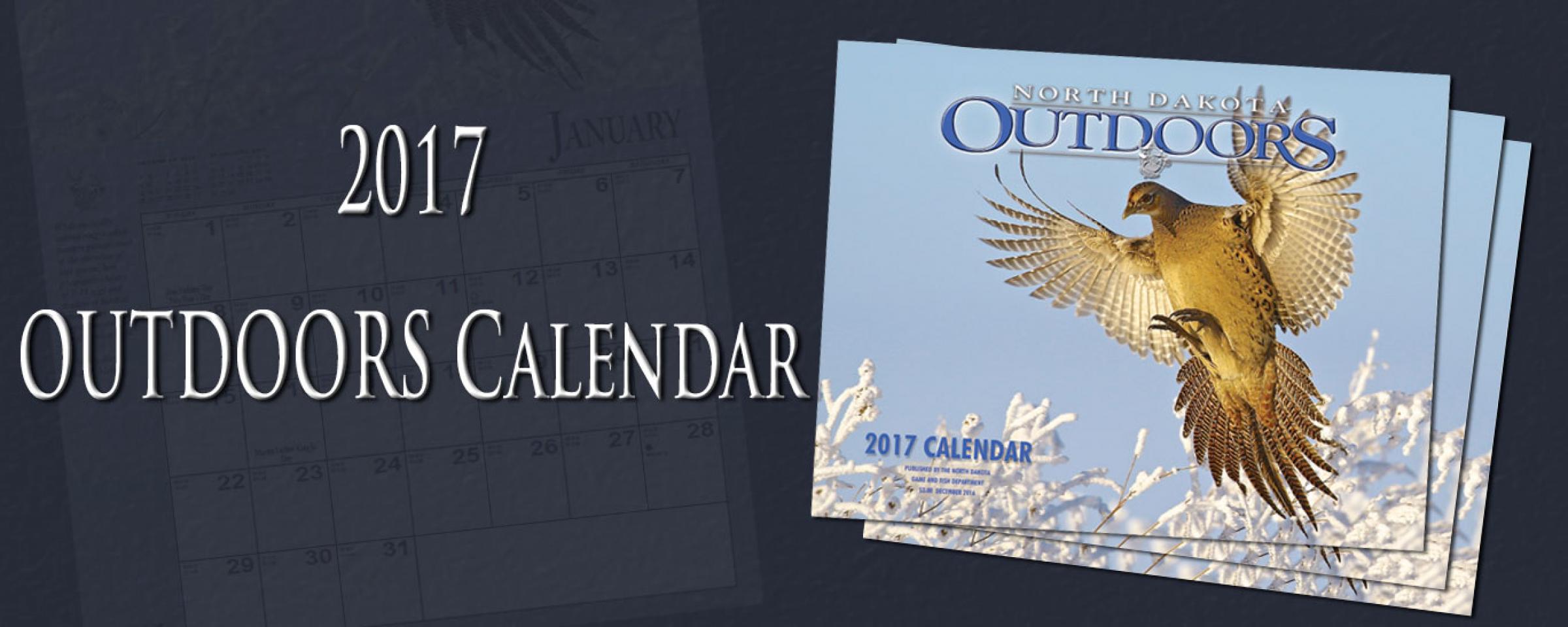
A Closer Look at the 2017 Calendar
January

While exotically colored ring-necked roosters garner much of the attention of this species, hen pheasants – layers of 7-15 eggs and tenders of hatched young – are handsome creatures in their own right.
Photo by Steve Silseth, Minot.
February
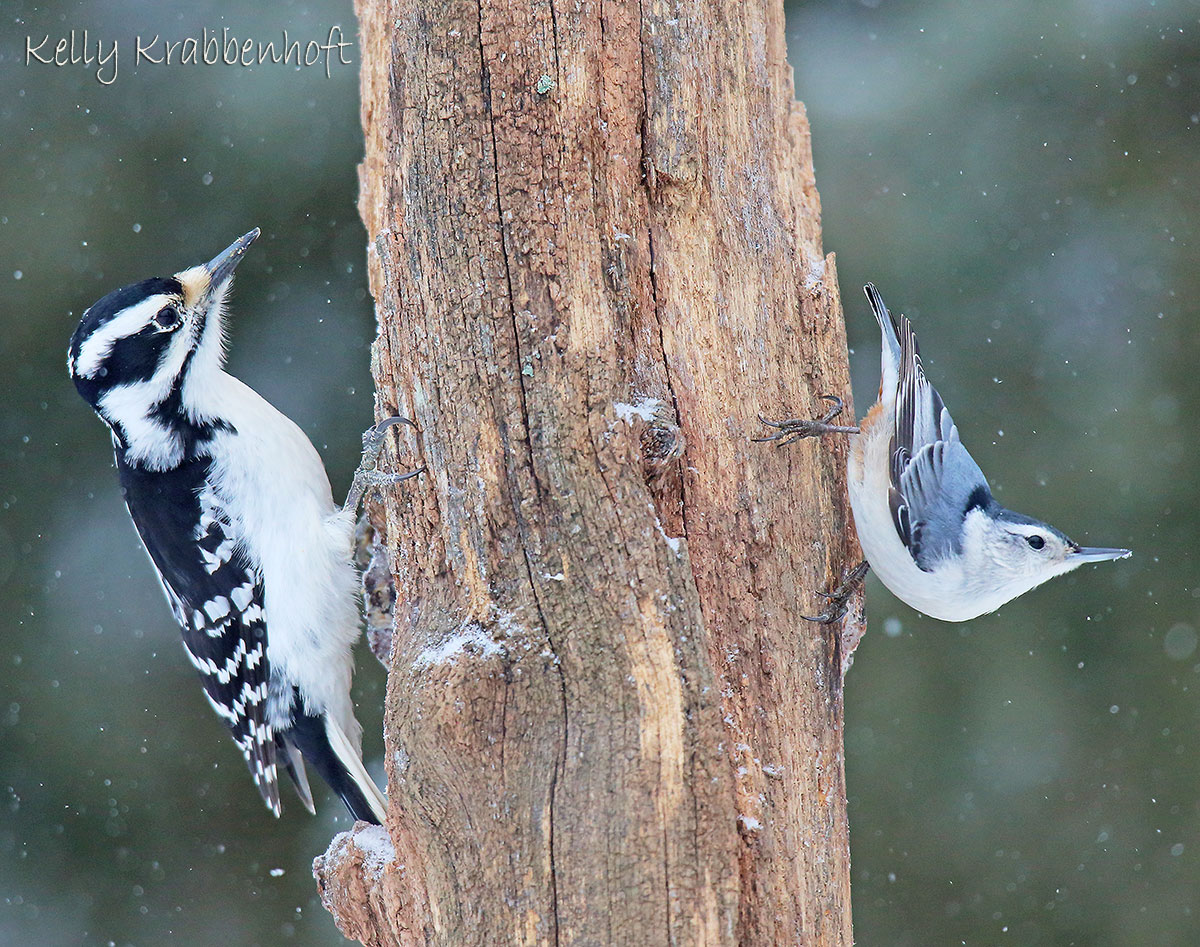
While this hairy woodpecker (left) and white-breasted nuthatch (right) seem like an unlikely duo, they both are after the same thing – food. The woodpecker is using its bill and forked tongue to probe for insects hiding under the bark, while the nuthatch is searching for seeds that it likely cached some time before.
Photo by Kelly Krabbenhoft, West Fargo.
March

Badgers are found throughout North Dakota, but are more abundant in prairie regions. They are digging machines and feed mostly on ground squirrels and pocket gophers. Badgers also eat insects, birds, mice, rabbits and eggs.
Photo by Craig Bihrle, Bismarck.
April
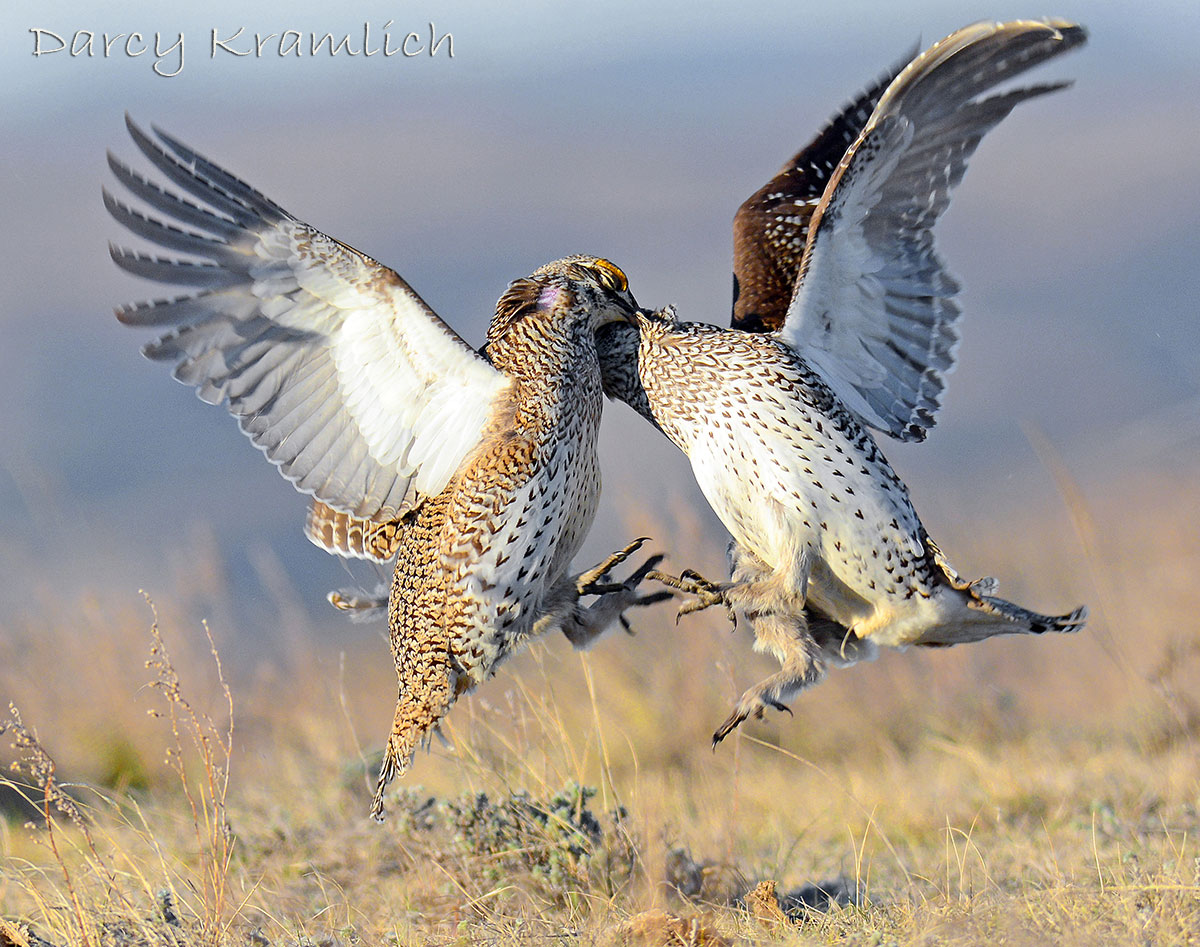
Sharp-tailed grouse are icons of North Dakota’s prairies. In spring, birds gather on leks where males display twice daily for female onlookers. At times, this rite of spring among strutting males can become heated as the birds try to establish dominance.
Photo by Darcy Kramlich, Grassy Butte
May

The black-crowned night heron, as its name implies, is mostly nocturnal. This heron begins to forage for food at dusk, while other herons are heading to roosts.
Photo by Craig Bihrle, Bismarck.
June
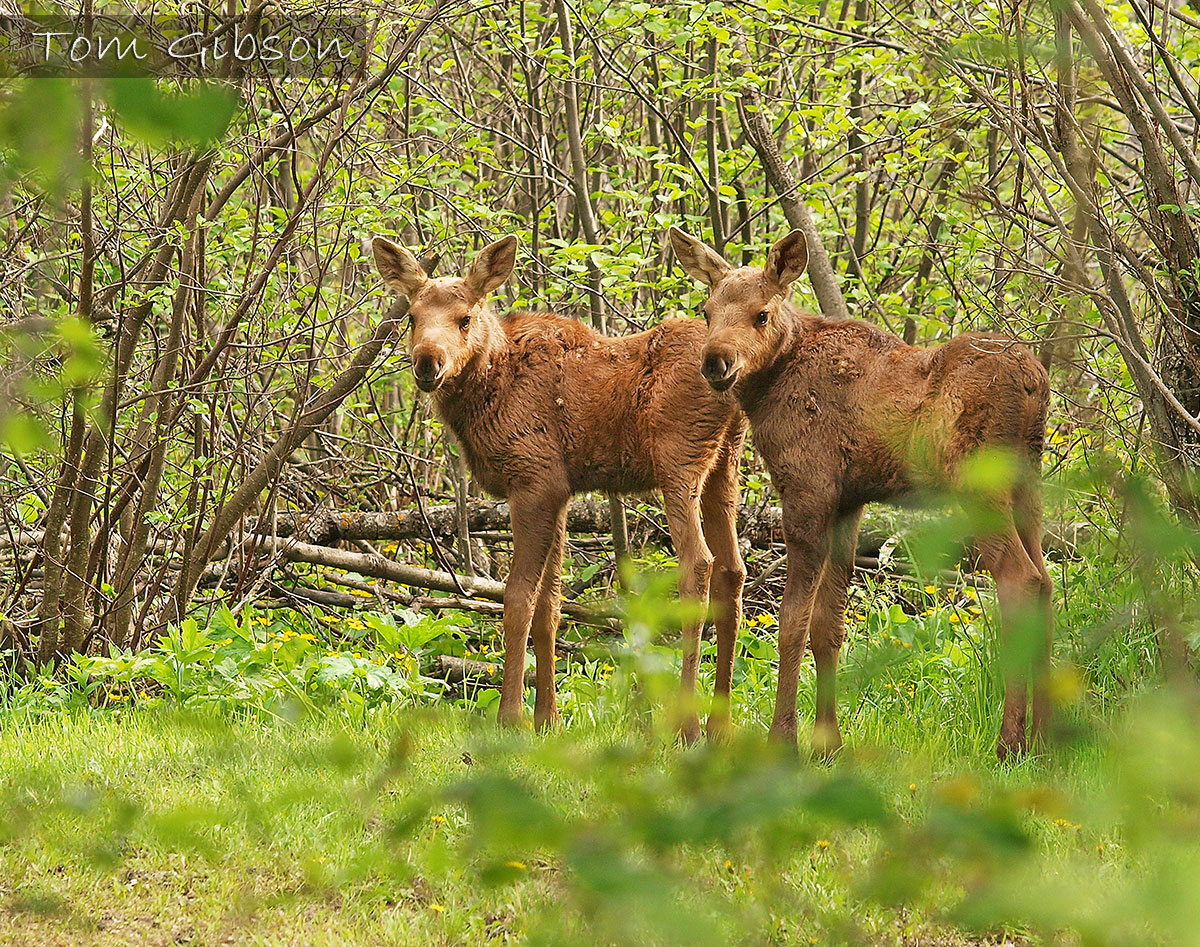
Moose calves in North Dakota are born in late May or June. Single calves are typically the rule and twins are not as common. Calves remain with the adult female until their second summer.
Photo by Tom Gibson, Bottineau.
July

Bumblebees, like the one pictured on a North Dakota native Flodman thistle, have seen dramatic declines in many parts of the United States. Loss of habitat, disease and pesticide use are among the factors that affect their populations. Native bumblebees are important pollinators of wildflowers and many agricultural plants. They transfer pollen from flower to flower, not only when it attaches to their bodies, but also when their wing vibrations shake the pollen loose, known as “buzz pollination.”
Photo by Craig Bihrle, Bismarck.
August
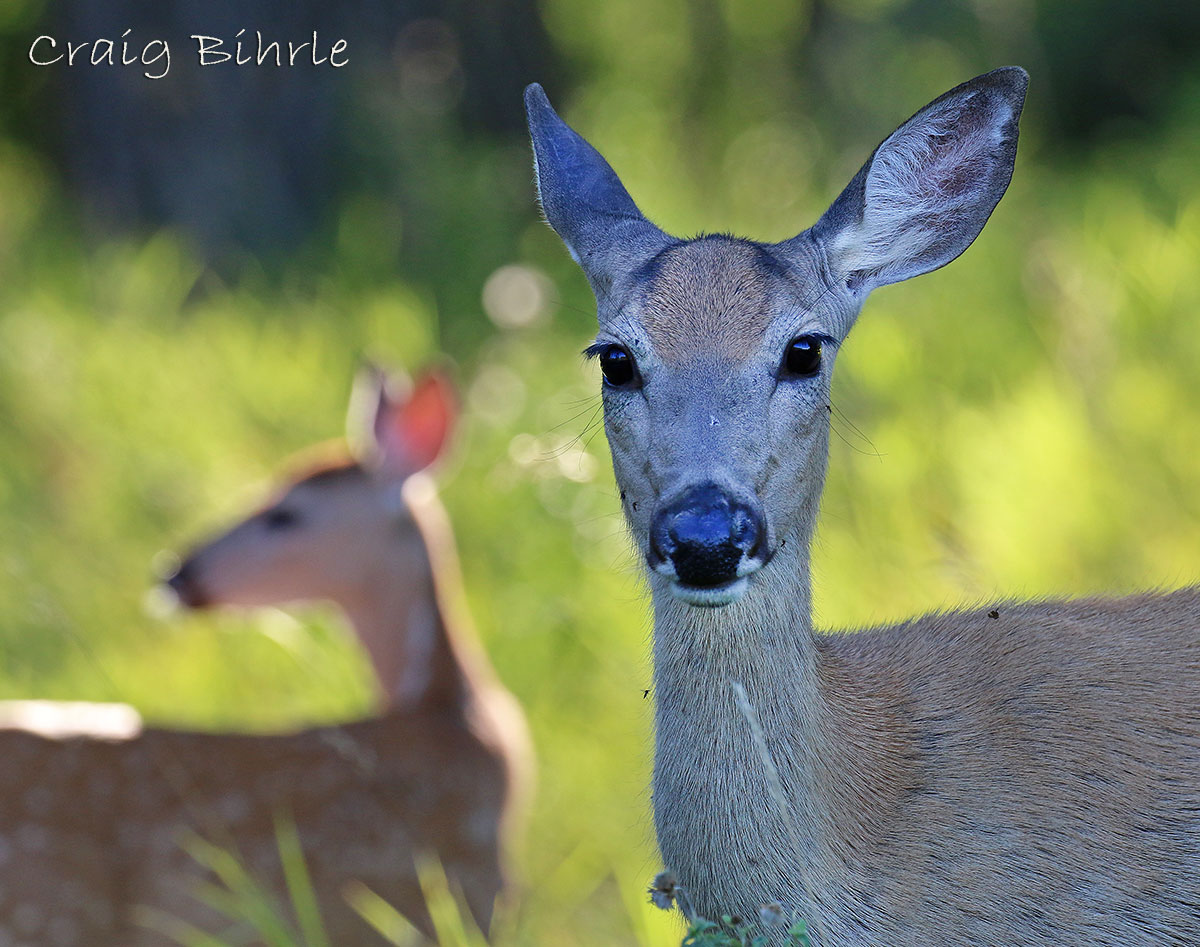
A mature whitetail doe and fawn. While deer in agricultural areas will sometimes use crops for food, whitetails are mainly browsers, feeding on tender shoots, twigs and leaves of shrubs and trees.
Photo by Craig Bihrle, Bismarck.
September

The colorful splendor of fall can be found in all its glory along the banks of the Missouri River from the Garrison Dam Tailrace to the headwaters of Lake Oahe.
Photo by Craig Bihrle, Bismarck.
October

By October, bowhunters have been pursuing deer for about one month in North Dakota. Arguably the state’s most coveted season, the deer gun season, arrives in November.
Photo by Steve Silseth, Minot
November

Thousands of snow geese rest on a mostly frozen wetland in Stutsman County in November 2015. Because snow geese are staging longer in Canada in fall, many of the birds aren’t making it to North Dakota until November.
Photo by Craig Bihrle, Bismarck.
December

Coyotes are secretive by nature and most of their activity occurs from dusk until dawn. Even so, it’s certainly not uncommon to see these guarded canines during daylight hours hunting for food.
Kelly Krabbenhoft, West Fargo
